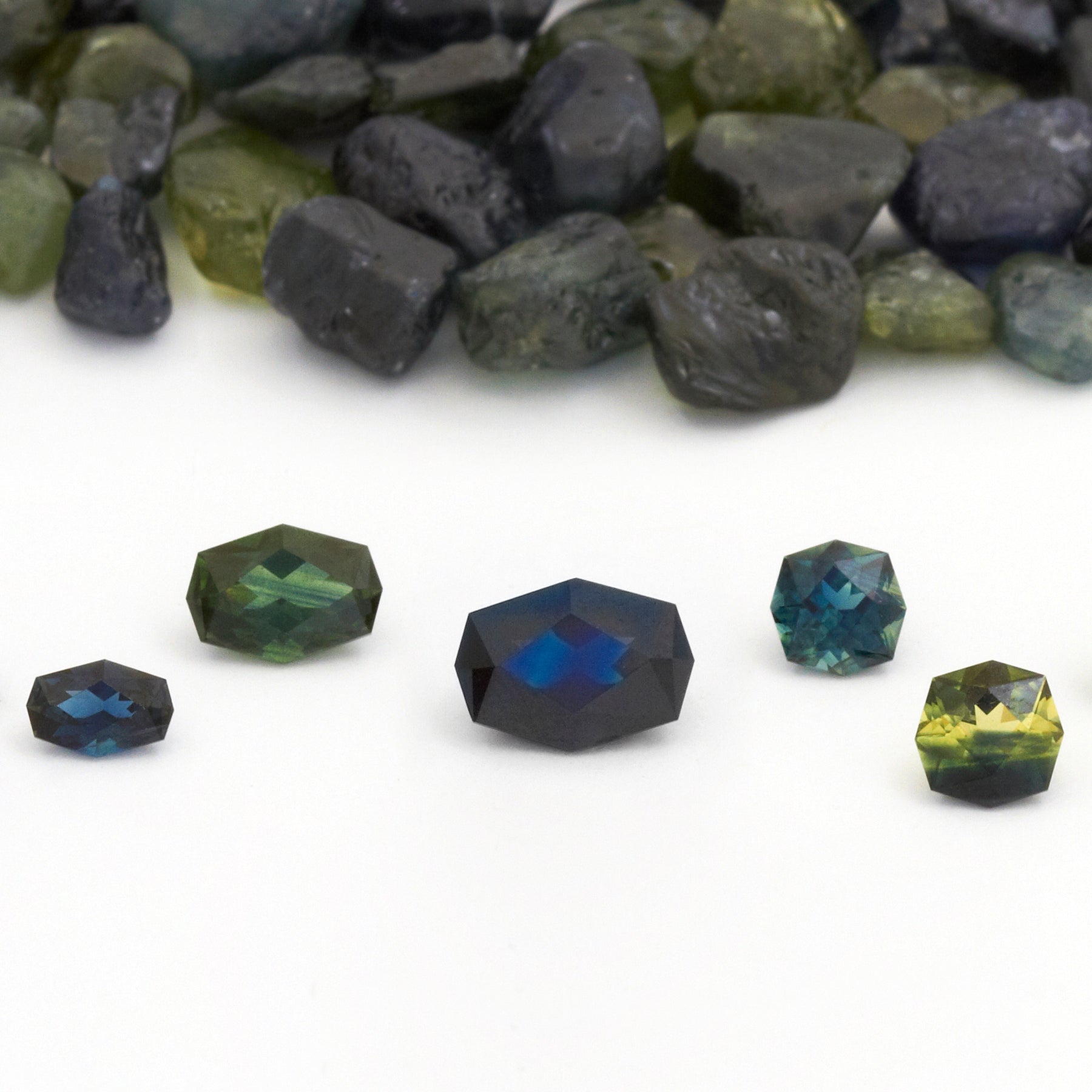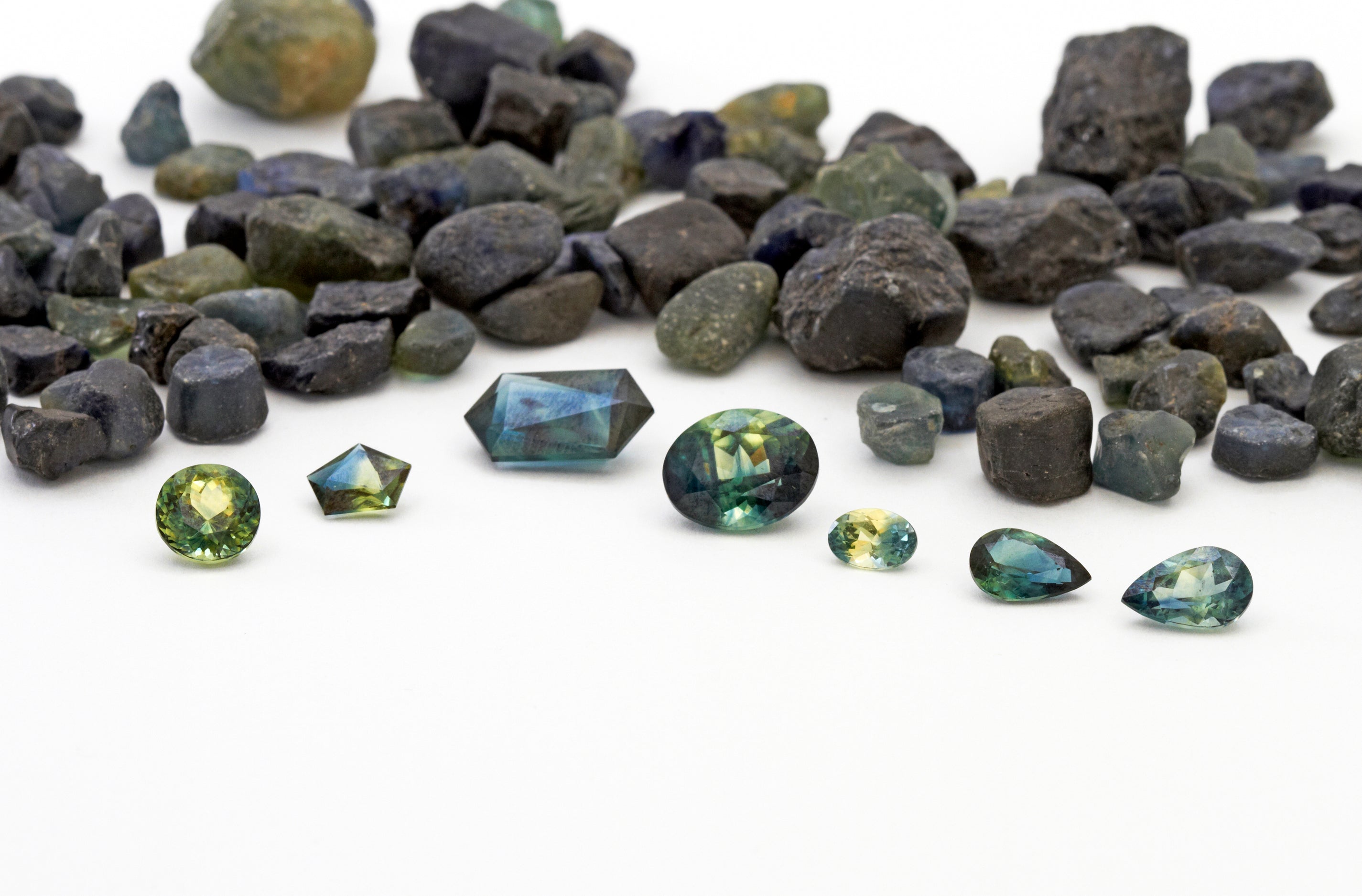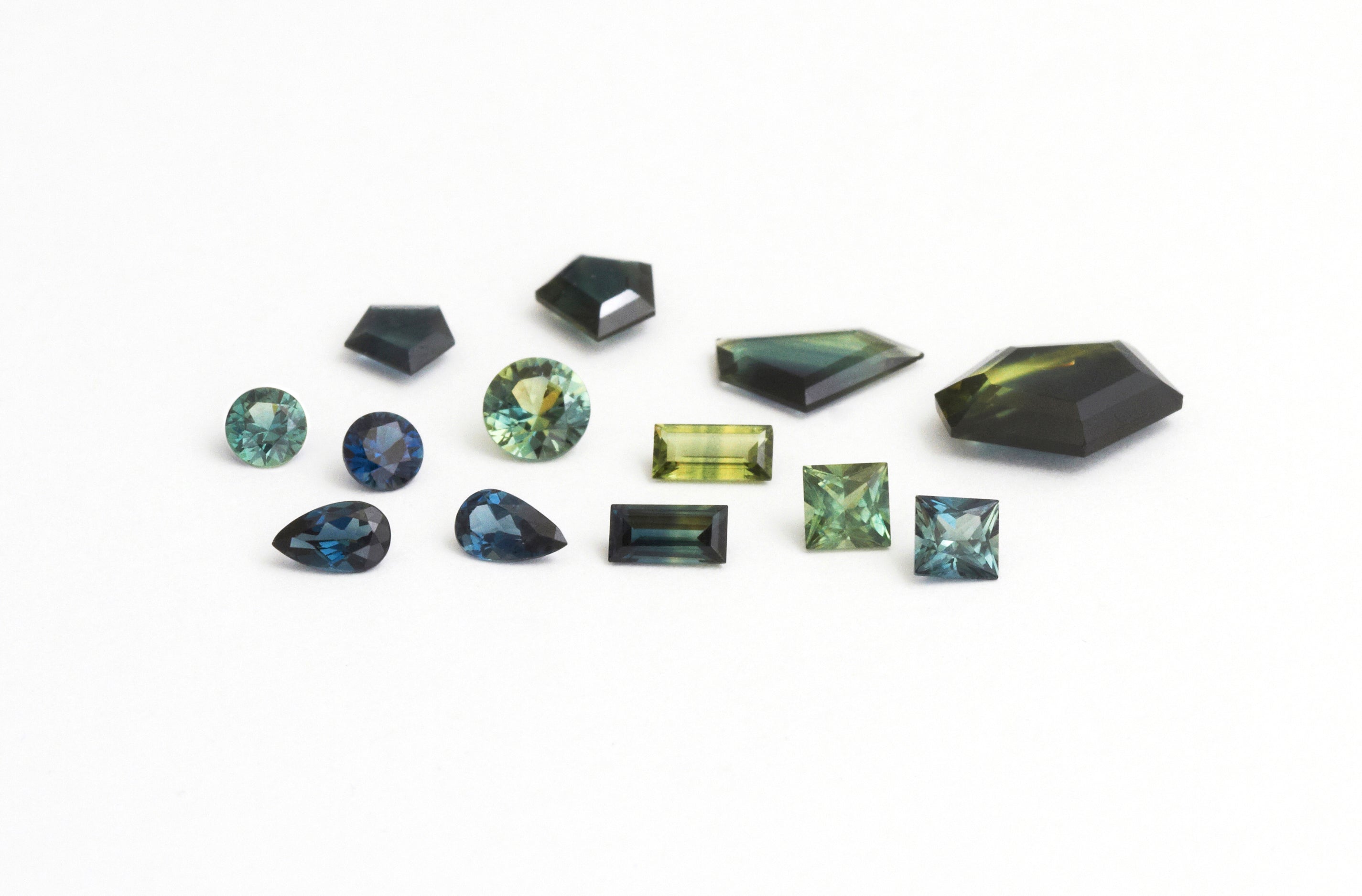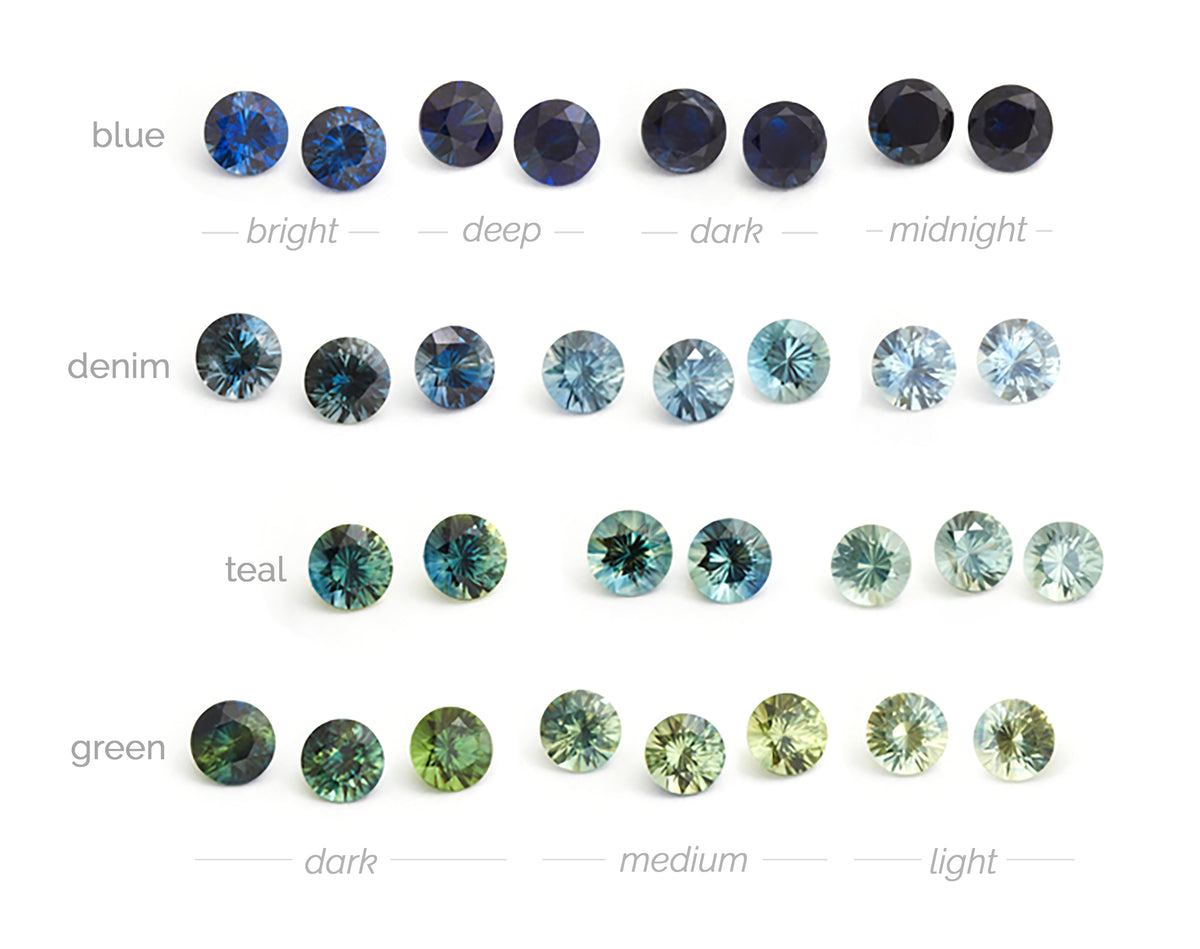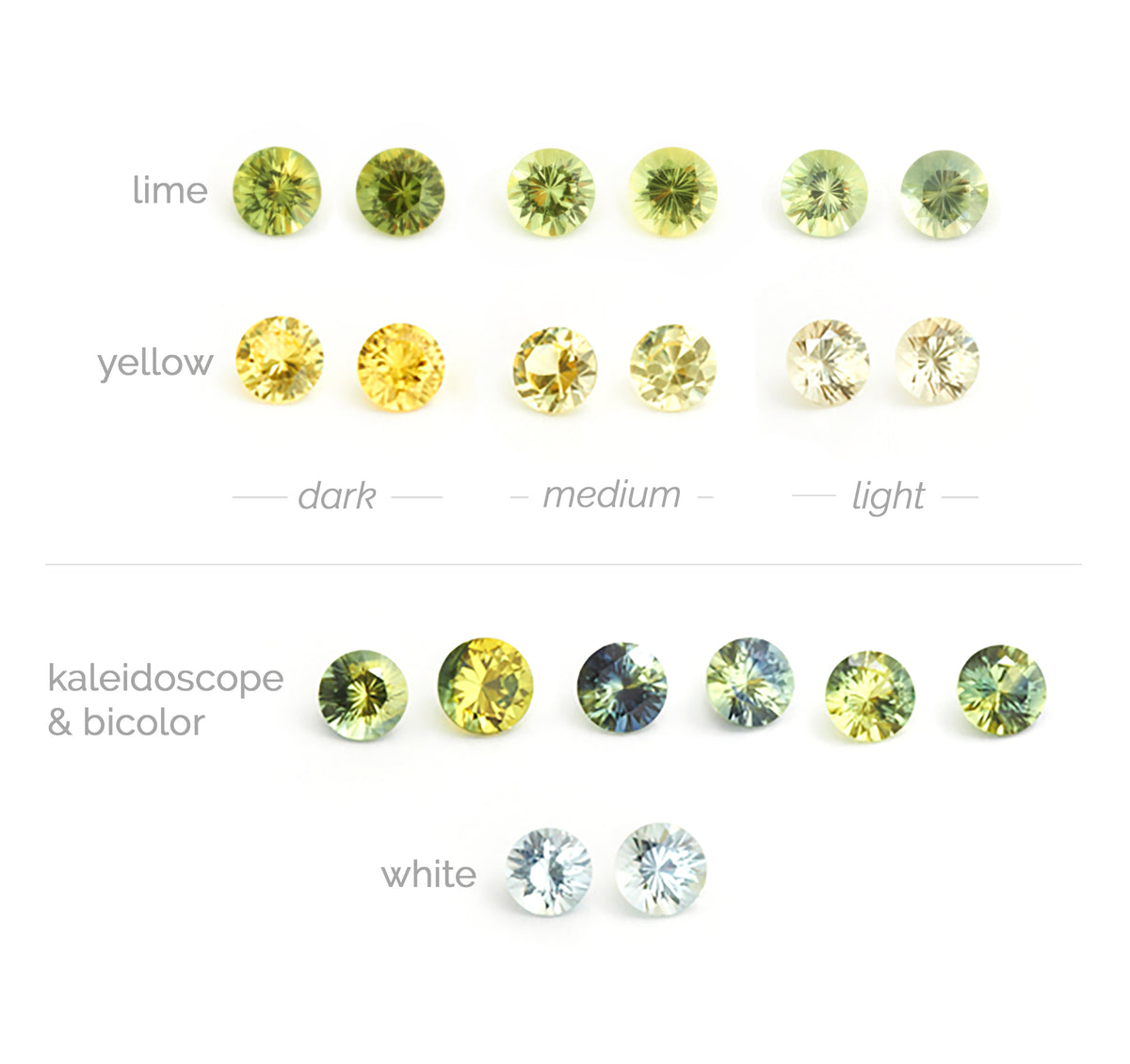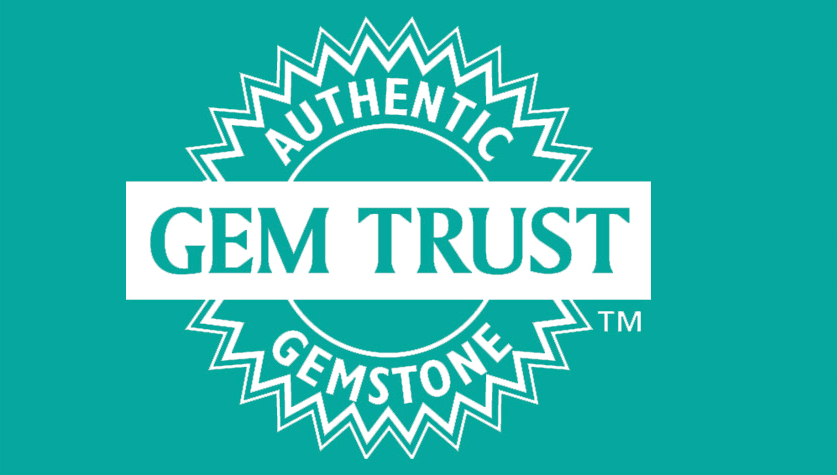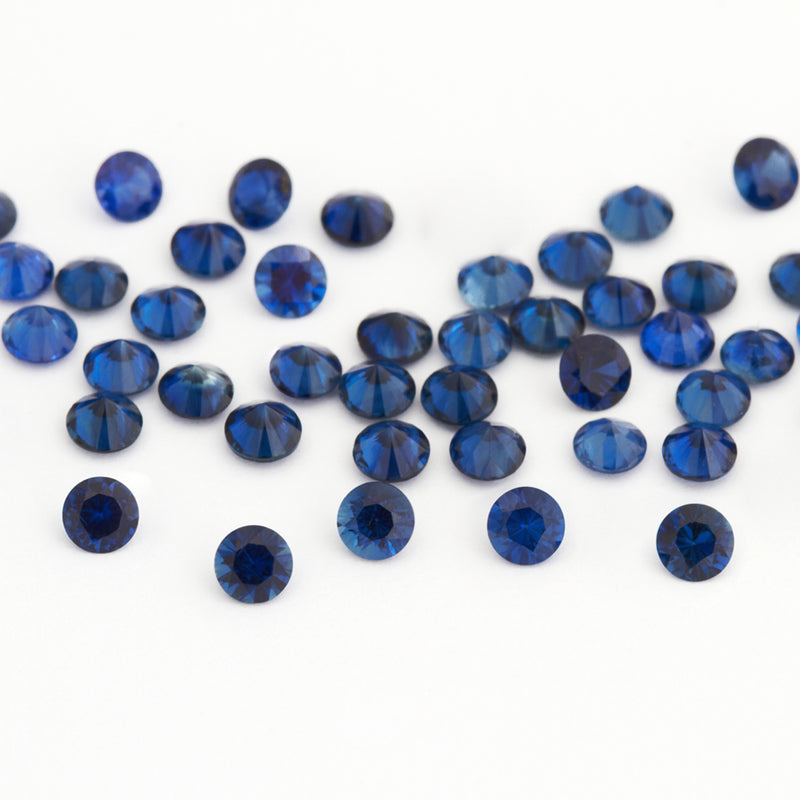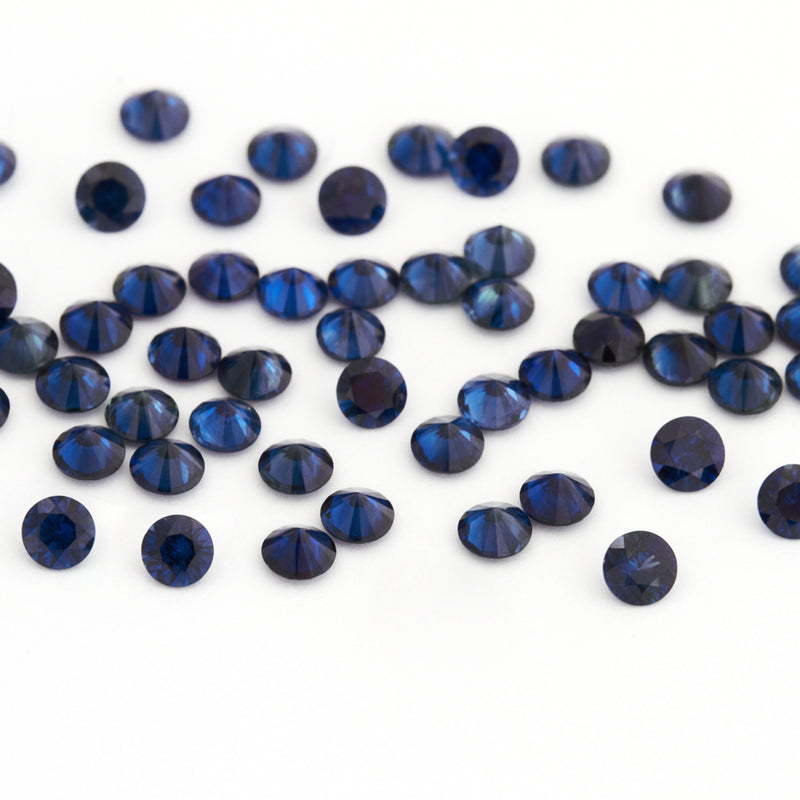Can you tell us a little about the source of this material?
Australia has been a major world source of sapphire for over fifty years. For many years Australian Sapphire was thought to only include very dark blue to near-black colors when in reality it produces a wide range of qualities and colors.
In the mid to late 1900’s the name ‘Australia’ even became a term used as a sapphire quality grade rather than simply a way to identify its origin. If a cutter had any extreme dark blues or near-black sapphires, it was labelled and sold as Australian Sapphire. Then the more open and bright (meaning more light is able to pass through the gem) blues from Australia were sold as sapphires from other more desirable origins, which translated to a higher selling price.
While it is true that you will find those dark to near-black blues in Australian material, we also see and produce a full range of beautiful deep greens, yellow-greens, olive tones, teals, denim, and even bicolor gems. Very different from what was labelled Australian fifty years ago!
Produced in several states within Australia, the most well-known and longest producing location is the area around Inverell, in New South Wales. This area produces nearly all blues, and they tend to be smaller size stones. The second major producer is near the towns of Emerald and Sapphire, which are in the state of Queensland. While there are some quality blues from this location, you will generally find more denim, teal, green, bright yellow, and some of the most beautiful bicolor sapphire gems. Since the gems from this area tend to be more open in color, it is also common to see somewhat larger stones come out of Queensland than the New South Wales deposits. This is true because, generally, darker rough material requires smaller stone cuts for adequate light transmission to discern color, whereas lighter material, such as that found in Queensland, allows for larger cuts while still showcasing the gem’s color effectively.
When sapphire was first found in Australia, it was primarily produced byfossickers, akin to the American termrockhounds, who individually pursued weekend gem-hunting excursions. They would often sift through deposits by panning or screening to uncover their treasures. While various producers now exist, fossicking remains a prominent leisure activity in Australia, mirroring the popularity of rockhounding in the United States.
What kinds of sizes, shapes and cutting styles can be found?
Australian Sapphire is basaltic and found in alluvial deposits, which are ancient stream beds. As a rule, Australian Sapphire crystals are ‘chunkier’ than the sapphire crystals you would find in Montana. At times, they are also found in longer pointed crystals which are often called dog teeth.
Traditionally, you would find Australian Sapphire cut in rounds, ovals, a few pear shapes and emerald cuts. But we think the long dog teeth crystals lend themselves to shapes like marques, long kites, and long pear shapes. So, today we cut an exciting array of shapes that include those traditional rounds and ovals, but we also cut pear shapes, emerald cuts, baguettes, tapered baguettes, hexagons, kites, triangles, trillions, tablets, lozenges, rose cuts, cabochons, as well as our signature GeoCuts™ and Arch Cabs.


